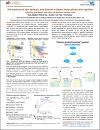Risk prediction of early decline in renal function in diabetic kidney disease with algorithm including fractional excretion of glycated amino acids
| المؤلف | Rabbani, Naila |
| المؤلف | de a Fuente, Alberto |
| المؤلف | Thornalley, Paul |
| تاريخ الإتاحة | 2021-10-18T08:15:37Z |
| تاريخ النشر | 2021 |
| اسم المنشور | Qatar University Annual Research an Exhibition 2021 (quarfe) |
| الاقتباس | Rabbani N., de F. A., Thornalley P., "Risk prediction of early decline in renal function in diabetic kidney disease with algorithm including fractional excretion of glycated amino acids", Qatar University Annual Research Forum and Exhibition (QUARFE 2021), Doha, 20 October 2021, https://doi.org/10.29117/quarfe.2021.0096 |
| الملخص | Background and aims: Diabetic kidney disease occurs in ca. 40% patients with diabetes. Approximately 1 in 5 patients with type 1 diabetes mellitus (T1DM) and 1 in 3 patients with type 2 diabetes mellitus (T2DM) develop early decline in renal function (EDRF), requiring renal dialysis after 5 - 20 years. Currently, at the time of normoalbuminuria or new onset microalbuminuria (incipient diabetic nephropathy), it is uncertain which patients are at risk of EDRF. With Joslin Kidney Study investigators, we found patients with T1DM who later developed EDRF (Decliners) have higher fractional excretion (FE) of 6 glycated amino acids - fructosyl-lysine and 5 advanced glycation endproducts (AGEs), compared to patients with stable renal function (Non-decliners). However, FE of any single glycated amino acid could not classify Decliners or Non-decliners. The aim of this study was to apply artificial intelligence machine learning to develop diagnostic algorithms to classify Decliners and Non-decliners by optimum combination of levels of glycated and oxidized amino acids in plasma and urine, related FEs and conventional clinical chemistry variables. Materials and methods: Patients with T1DM with stable renal function (n = 63) and EDRF (n = 22) were recruited for this study. Data on levels of 14 glycated and oxidized amino acids in plasma, urine, related FEs, glycated hemoglobin A1C, log(urinary albumin creatinine ratio, ACR), age, gender and duration of diabetes at the time of new onset microalbuminuria were included as features in algorithm development. Algorithms were trained and tested on 90%/10% data split, repeated 1000 times, using the Extreme Gradient Boosting method. Results: The algorithm gave an optimal classification of Decliners and Non-decliners. Optimum with features: A1C, log[ACR], FE(Nꞷ-carboxymethylarginine, CMA), FE(glyoxal-derived hydroimidazolone, G-H1) and plasma concentration of Nε-carboxymethyl-lysine (CML) free adduct; For The diagnostic performance for risk prediction of future EDRF was (mean ± SD): sensitivity 74 ± 9%, specificity 91 ± 45 and accuracy 87 ± 4%. The positive likelihood ratio LR+ was 11.0, indicating that this method gives strong, often conclusive evidence of future EDRF in patients with T1DM. In contrast, algorithms with A1C and logACR only as features gave LR+ 2.6, providing small evidence of risk of future EDRF. Conclusion: With conclude that FEs of glycated amino acids are novel risk predictors of EDRF, likely linked to reporting of early-decline of cationic amino acid transporter function in the renal tubular epithelium. Genetic polymorphism of these amino acid transporters has been linked to rapid decline in renal function in genome-wide association studies. Measurement of only 3 glycated amino acids, CMA, G-H1 and CML, produced an algorithm with optimum risk prediction of EDRF. With further validation, including in patients with T2DM and with chronic kidney disease without diabetes, this method may markedly improve clinical risk prediction of EDRF. |
| اللغة | en |
| الناشر | Qatar University Press |
| الموضوع | diabetic kidney disease early decline in renal function (EDRF) glycated amino acids fractional excretion machine learning risk predictors |
| النوع | Poster |
الملفات في هذه التسجيلة
هذه التسجيلة تظهر في المجموعات التالية
-
أبحاث الطب [1794 items ]
-
Theme 2: Health and Biomedical Sciences [80 items ]


